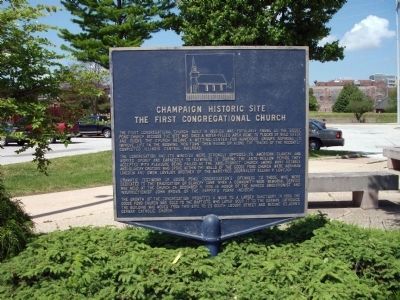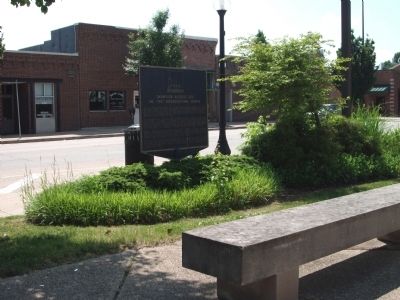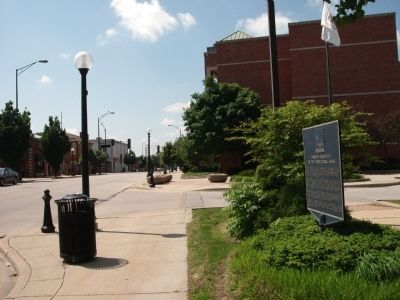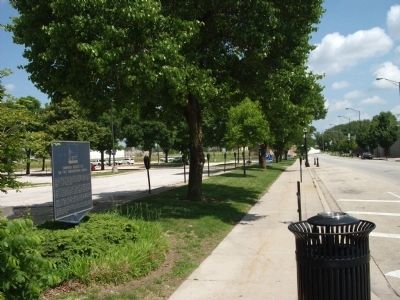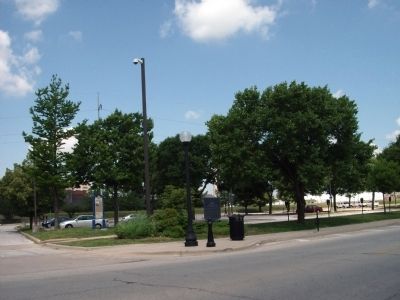Champaign in Champaign County, Illinois — The American Midwest (Great Lakes)
The First Congregational Church
Champaign Historic Site
Inscription.
The First Congregational Church, built in 1855-56, was popularly known as the “Goose Pond” Church, because the site was once a water-filled area, home to flocks of wild geese and ducks. The church became a meeting center for numerous groups aspiring to improve life in the booming “New Town” then rising up along the tracks of the recently completed Illinois Central Railroad.
The congregation and its minister were strongly opposed to American slavery, and worked openly and earnestly to eliminate it during the ante-bellum period. They accepted with pleasure being hailed as the “Abolitionist” Church. Among many notable anti-slavery orators who spoke within the walls of the Goose Pond Church were Abraham Lincoln and Owen Lovejoy, brother of the martyred journalist Elijah P. Lovejoy.
Dramatic testimony of Goose Pond Congregation’s openness to those who were dedicated to the eradication of slavery came when a community-wide memorial service was held at the church on December 11, 1859, in honor of the hanged abolitionist and insurrectionist John Brown, of the Harper’s Ferry incident.
The growth of the congregation prompted a move to a larger sanctuary in 1866. The Goose Pond Church was sold to the Baptists, who later sold it to the German Catholics. The building was moved from this site to 23 South Locust Street and became St. John’s German Catholic Church.
Topics. This historical marker is listed in these topic lists: Abolition & Underground RR • Churches & Religion • Communications • Government & Politics. A significant historical month for this entry is December 1728.
Location. 40° 7.033′ N, 88° 14.332′ W. Marker is in Champaign, Illinois, in Champaign County. Marker is at the intersection of 1st Street and East Park Street, on the left when traveling north on 1st Street. Touch for map. Marker is in this post office area: Champaign IL 61820, United States of America. Touch for directions.
Other nearby markers. At least 8 other markers are within walking distance of this marker. Champaign's Lincoln (here, next to this marker); The Cattle Bank Building (about 300 feet away, measured in a direct line); Inman Hotel (approx. 0.2 miles away); New Orpheum Theatre (approx. ¼ mile away); Roger Joseph Ebert (approx. 0.3 miles away); Kappa Sigma Fraternity House (approx. 0.7 miles away); Sigma Alpha Epsilon Fraternity House (approx. 0.7 miles away); Early Computers (approx. 0.7 miles away). Touch for a list and map of all markers in Champaign.
Credits. This page was last revised on October 28, 2019. It was originally submitted on May 24, 2010, by Al Wolf of Veedersburg, Indiana. This page has been viewed 1,534 times since then and 9 times this year. Photos: 1, 2, 3, 4, 5. submitted on May 24, 2010, by Al Wolf of Veedersburg, Indiana. • Bill Pfingsten was the editor who published this page.
